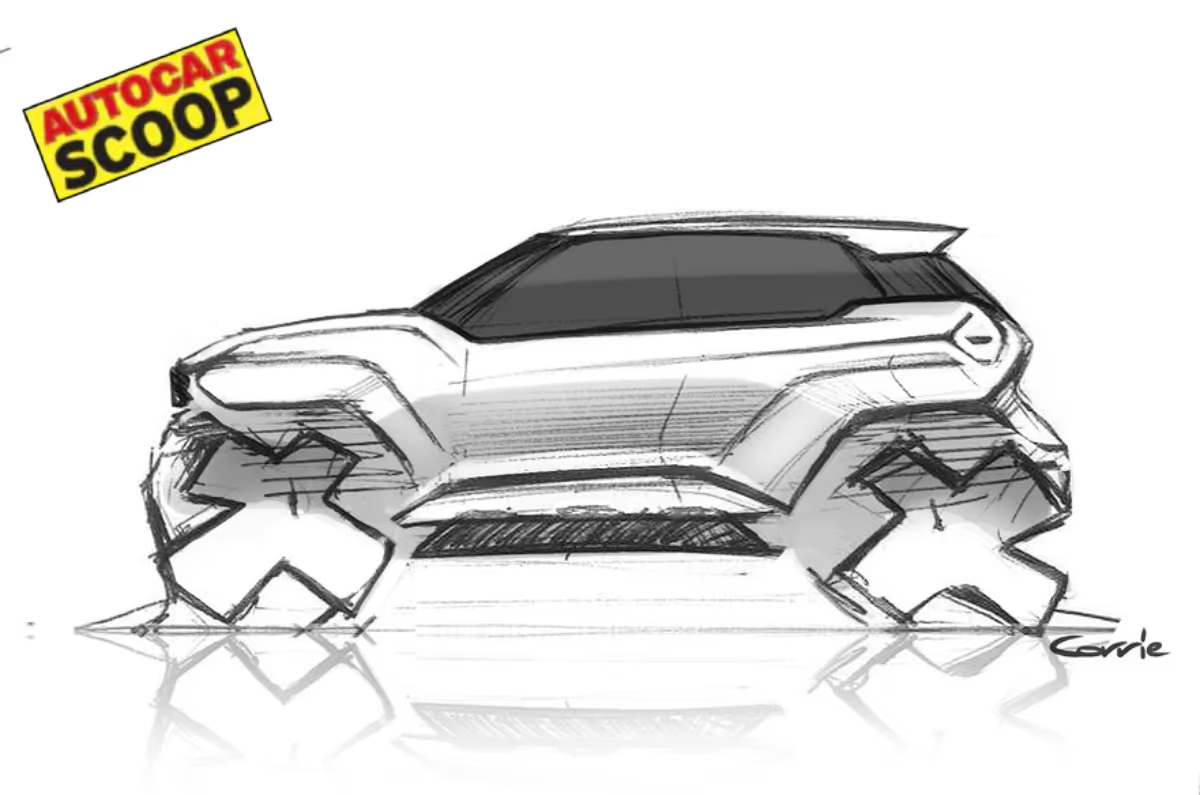New York-based Master & Dynamic is best known for its premium sound and gorgeous portfolio of audio peripherals. The price tags on its products also attest to how premium they are. In fact, if there’s anything we’ve had a gripe with on its headphones, it’s usually been the price. With its cheapest headphones priced at $450, M&D makes it clear that it’s not for consumers shopping on a budget. It likes to remain exclusive to professionals or “real audiophiles.”
Recently, M&D gave its most high-end headphones, the $600 MW75, a refresh. It embedded the headphones with EEG (Electroencephalography) sensors and rebranded them as the MW75 Neuro for $700. The sensors work like a regular EEG test that tracks and records the electrical activity in your brain. Except, instead of wearing a cap with a bunch of wires tethered to a computer, you can achieve the same results with a stunning pair of wireless headphones. Apart from striped earcups indicating the presence of EEG electrodes inside, the MW75 Neuro looks exactly like the regular MW75, which is great since those 2022 headphones were real head-turners.

The MW75 Neuro is designed to help you focus better. The EEG sensors read your brain’s activity and work with a BCI (Brain-Computer Interface) to record and present results on Neurable, the smartphone companion app. These results include your optimum focus hours and attention span durations, along with push notifications when it’s time to take a break. The headphones also reward you for your focus, with 100 points being the daily goal.
MW75 Neuro: The Bad
This is a complete list of everything the MW75 Neuro can do at the moment: exchange your minutes of focus for reward points, congratulate you upon hitting 100 points in a day, maintain a streak if you’re consistent, and reveal a few insights. These insights include your best focus time (morning, afternoon, evening, night), your best attention span in minutes, and the activity you’re most focused on (work, study, other, etc.). It also produces a chart for each session, which reveals the time you spent in high, medium, and low focus, along with the number and duration of breaks you took.
As you can tell, the MW75 Neuro is best for folks with attention deficit issues, though M&D adds it’ll soon add more brain conditions that the headphones can help with. At the moment, though, all that data certainly isn’t worth $700. It’s simply not enough. I called up a friend with ADHD and asked him for his opinion on the product after explaining all its features in detail. He said he definitely won’t purchase a product, regardless of the price, for the kind of data the MW75 Neuro is currently providing. He went as far as to say that he might not even download an app for it. His justification was that he was already aware of such high-level info on his focus patterns and would find navigating a pair of headphones and an app for it unnecessary.
I’m with my friend on this one. The MW75 Neuro is the kind of gadget you find extremely novel initially simply because it’s a new concept, but you get bored of it just a few weeks in, as I did with my review unit. I found that I had no “real” reason to keep tracking my focus. Also, let’s be honest: none of us has the time to check a graph of your focus patterns after completing each task. And maybe someone without attention deficit issues might even find it completely unnecessary.
More importantly, let’s not forget that this isn’t some sensor attached to your skin tracking you all day. It’s a hefty 378g device on your noggin, which quickly starts feeling like a burden. For context, Sony’s flagship headphones, the WH-1000XM5, are considered light at 250g, and Apple’s AirPods Max are criticized for their heavy 385g body. Wearing headphones even when you’re not listening to anything is a tiring way of tracking focus.

Since the sensors require the earcups to touch your skin at all times, you must adjust your hair, glasses, and earrings for the headphones to sit perfectly. These are just a few things I struggled with. I can imagine caps or bandanas being an issue, too. Would I have to take my beanie off to work with these in a few months when it starts getting cold?
What really doesn’t help the MW75 Neuro’s unsuitability as all-day headphones is their critically short eight to nine-hour battery life with both ANC and EEG enabled. I often found these out of juice when I’d pick them up during my time with them. The only way to regularly use these with ANC and EEG is to recharge them every day. It’s not impossible, but an average consumer will most likely find that a lot of effort, especially if they don’t see much value in what they’re getting.
Closely related to the point above is the fact that this device is marketed as a way to draw conclusions about how various activities (yoga, coffee, etc.) affect your focus time. But I can’t wear a 378g device with an eight- to nine-hour battery life on my head long enough to notice these patterns. For that, I’d need tech that’s a lot more invisible.
To make the overall experience more annoying, the companion app was extremely buggy in terms of connection. It never recognized my headphones on the first attempt when I’d tap on “Start a focus session” (which means I’d allow it to start recording my brain activity when starting a task). Even though they’d quickly connect as soon as I’d turn them on, and the Bluetooth page in my Settings would attest to that, the Neurable app would always tell me first to connect the headphones. I’d have to switch to the Settings app, do nothing there, and return to Neurable. I tried simply waiting on the Neurable app, but that never worked.
On multiple days, it simply refused to recognize the Bluetooth connection. I tried waiting, rebooting the app, and switching to Settings. Nothing worked, so I eventually gave up on those days. I’m hoping the connection issues were due to the app being in beta mode and will be resolved at launch.
Honestly, I couldn’t use the Neuro quite a few times when I wanted to simply because they were either out of battery, not recognizing the Bluetooth connection, or failing to activate all their sensors even though I ensured my hair was fully pushed back and my head and the earcups were fully in contact. Yes, I could’ve charged them once or twice daily, but that’s unrealistic for me and most people, and I would’ve done that solely for review purposes. I deliberately kept my usage pattern real and natural.
Since these failed to be my all-day headphones for quite a few reasons, I couldn’t trust their results too well. It told me I focus best in the evenings. But I think that’s because I coincidentally used them in the evening most often, as I’d have time to recharge them and deal with their connection issues.

MW75 Neuro: The Good
Regardless of how useful or not the tracking is at the moment, it’s very accurate. It graphs out your stats pretty precisely, and I must give them that. Any dip or spike in your attention is immediately noted and promptly presented when you end the session. I noticed the attention span metrics helped shame me into focusing eventually. Seeing “Your best attention span was four minutes” after ending a one-hour session was pretty embarrassing.
Closely related to the point above is that you tend to behave when you know your brain activity is being recorded. A big chunk of my experience with the MW75 Neuro was simply based on the desire to have a perfect chart with a lot of blue bars (high focus minutes) and the least number of yellow bars (low focus). So, I guess I can say it pushed me to focus better most days. Did it completely transform the way I work, though? No. I was hoping its points system would incentivize me to concentrate harder. It did, but I wish it was a lot less lenient than it was. I would very quickly hit 100 points, and there wouldn’t be much of an incentive anymore.
Let’s not forget that for the $700, you’re still getting a gorgeous pair of headphones that I can’t stop admiring: excellent ANC and brilliant sound. You don’t always have to use the brain features on the MW75 Neuro; if they’re disabled, you still have a fantastic pair of headphones. I’m particularly fond of M&D’s decision to include physical buttons on all its products. Navigating these headphones was a breeze.

Verdict
The MW75 Neuro is undeniably off to a decent start but needs much more utility to be worth its price. M&D says it will soon give them ChatGPT functionality, which will allow you to use head gestures to respond to messages on your phone. There’s also Spotify integration coming, which will inform you what kind of music works best for your focus. The company sounds hopeful about adding more brain conditions to the headphones, too.
While I’m looking forward to all these updates, I can’t justify buying the MW75 Neuro today based on future promises. We’ve been seeing the trend of unfinished gadgets with Humane’s AI Pin and the Rabbit R1. The iPhone 16 recently joined that list, which technically isn’t unfinished but is being marketed on a feature that hasn’t even been released yet—Apple Intelligence. I believe in buying a gadget for what it is today, not what it can be tomorrow.
I like the MW75 Neuro’s design premise. It’s cool to have a gadget that gamifies focus, but it needs to do a lot more and make far fewer mistakes to be something I genuinely want to reach for every day. I’m very excited to see how this product evolves in the future.




















































